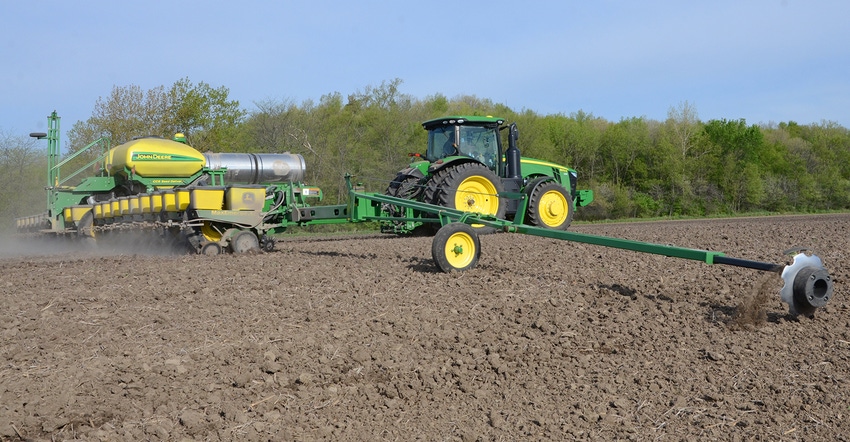January 15, 2020

It’s shop time for many farmers. As cold winds blow, for many, attention is turning to planting. That means tuning up equipment and getting it ready to run efficiently — and reliably — during that busy spring season. Ever consider your tires?
“A lot of times, tires are overlooked the most,” says Brad Harris, ag field engineer, Firestone. “When you go into planting season, it’s important to inspect tires on equipment.”
And he cautions that those planter modifications you’ve made may be a great agronomic decision, but consider the added weight. “The updates you’ve made steel-wise on that planter or other equipment can add weight; are the tires on that equipment capable of carrying the new heavier weight?”
And that’s a question many farmers may not have asked. Harris notes that the residue management systems, the row cleaners, no-till coulters and pop-up fertilizer tools all add weight. “The weight we’re adding may exceed what the old bias-ply implement tire on the planter can handle,” he says. “If the tire fails, it’s not the tire’s fault if you added that weight.”
He recommends knowing the carrying capacity of those implement tires. And if you’ve added attachments, consider upgrading to a larger tire. Also, it might be time to switch to radial implement tires that can offer higher load-carrying capacities.
“There are visible and invisible problems with tires,” Harris says. “You want to inspect tires so you can take care of problems early.”
Tire tips
Harris notes that the first step is to check tires for cuts, snags or tears in the rubber. “If you don’t see the tire cords and it’s superficial, it’s safe to use,” he says. “If you inspect that tire, and you see fabric or steel from the outside, we encourage the customer to replace that tire as part of the preventive maintenance program.”
One area on tractor tires is bar height, or skid depth. He notes that if you have only a quarter of the original tire’s bar height, showing it might not impact traction in dry conditions — but in wet conditions it could mean trouble. And after 2019, it might be worth checking the age of those tires. “In a wetter planting season, if you have less than 20% of the skid, you can lose traction in the field,” he notes.
Taking care of those tire issues early can keep you in the field, but how do you decide how many tires to replace on a machine? Should they match?
“If we’re looking at a newer piece of equipment and you notice a dual in the rear may have a sidewall cut, but other tires aren’t worn down, replace just one. If you get one bad tire and the rest are more than 50% worn down, consider replacing all of the tires.” That’s key, because adding one new tire to a machine where the rest are more than 50% worn can cause higher wear on the new tire, because it will be carrying more of the load, he adds.
Inflation pressure is also important and worth checking regularly. The key is knowing your axle weight and matching that inflation pressure. You can also look at the contact patch your tractor is making. Harris notes that you want to see more bars on the ground for better field traction.
Some IF/VF tires have lower operating pressures, even with higher axle loads. Matching inflation pressure to axle weight for those tires can increase traction — and with the lower pressures, can reduce compaction.
Simple but effective
Harris offers one last bit of advice. Make sure you get a torque wrench out and tighten all the lugs for all wheel assemblies, including wheel weights. “I’ve had customers in my area in Ohio that didn’t check those lug bolts or the main bolts on a wheel weight, and they dropped a 1,500-pound wheel weight in the field,” he notes.
And if you’re operating in no-till conditions, some type of system to knock that stubble away from tires, or at least push it forward, can boost tire life, Harris adds.
There’s a lot of tech riding on those tires these days. Making sure you have good rubber on implements, and tractors can pay off during the heat of the season.
About the Author(s)
You May Also Like






